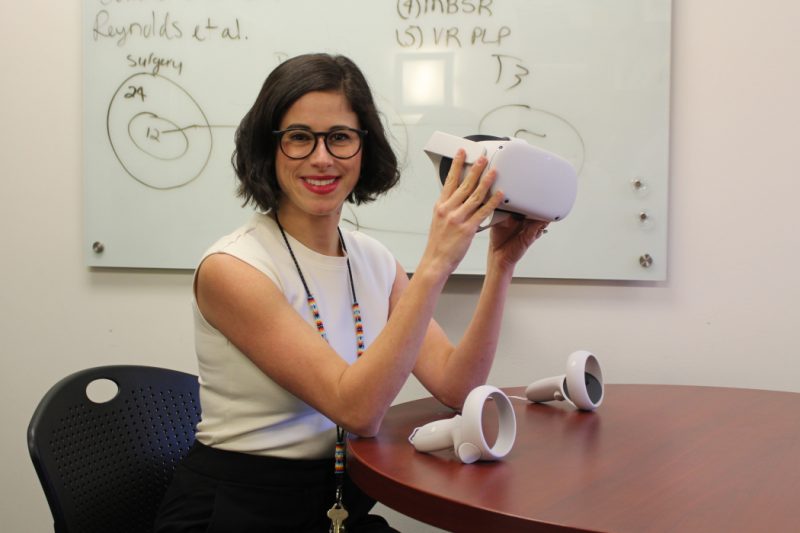This article is for informational purposes only and is not a substitute for professional medical advice, diagnosis or treatment. Contact a qualified medical professional before engaging in any physical activity, or making any changes to your diet, medication or lifestyle.
A week after a man from Missouri died after eating raw oysters contaminated by a flesh-eating bacteria, seafood safety is top-of-mind.
The 54-year-old man died from the bacteria Vibrio vulnificus, and the oysters he ate were likely contaminated before the establishment he bought them from even received them, according to a release.
Vibriosis is not typically deadly but it does causes about 100 deaths in the U.S. annually, People reported. Most infections happen between the months of May and October.
As we enter that warm period, a food expert tells Yahoo Canada, raw oysters have always been a high-risk food.
"They are considered one of the most high risk foods per serving… and the risk increases the more time you take a food," said Keith Warriner, a food scientist at the University of Guelph in Ontario.
"Now with oysters, I don't think you're going to eat them every day."
Warriner said oysters in Canada, the U.S. and elsewhere can be contaminated with noroviruses or Vibrio, a naturally-occurring bacteria.
According to the Public Health Agency of Canada (PHAC), the bacteria "can be present at high levels in coastal waters during periods of increased water temperatures. Most people come in contact with Vibrio by eating raw or undercooked shellfish, especially oysters."
However, there’s different species of the bacteria. One species, Vibrio vulnificus, is known as the flesh-eating bacteria can cause life-threatening wound infections, according to Health Canada.
It often causes septicemia, an infection of the bloodstream, which can be fatal, the agency said. People who get infected with Vibrio vulnificus often end up needing intensive care or even limb amputations.
According to Warriner, it's a brutal bacteria.
"When you hear about cases, it's usually the elderly or the immunocompromised… But with Vibrio vulnificus, it doesn't really matter what age you are," he said.
With other species of Vibrio in oysters, those infected would most likely experience diarrhea, abdominal cramps, nausea, vomiting and headache. The illness is also likely to be mild to moderate and most symptoms end within a week, according to PHAC.
Why are oysters risky?
Warriner says the reason why raw oysters are so risky is that they’re harvested from the sea where the water quality isn’t the best due to sewage dumping and other pollutants.
He referenced a 2022 report by World Wildlife Fund Canada where it was found "ships operating in Canadian waters generate 147 billion litres of operational waste each year — the equivalent of 59,000 Olympic-sized swimming pools."
The report’s press release said the waste stream "collectively contain heavy metals, carcinogenic compounds, oils, microplastics, pathogens, nutrients, toxic chemicals and other pollutants," reducing the amount of carbon absorbed by oceans.
"Oysters are called bivalve, which basically means they're filter feeders. And so anything in the water, like norovirus for example… all these pathogens accumulate within the muscle," Warriner said.
The most recent report of a norovirus outbreak and gastrointestinal illnesses linked to raw oysters from British Columbia was in April 2022. In total, 339 confirmed cases of norovirus and gastrointestinal illness were reported in British Columbia, Alberta, Saskatchewan, Manitoba and Ontario. No deaths were reported.
Warriner said the risk of oysters is potentially also rising due to climate change.
"Climate change means warmer waters… Vibrio can now grow and contaminate not only shellfish, but seafood, and pathogens like salmonella… survive better when the temperatures are warmer," he explained.
How do sellers ensure oysters are safe?
According to Warriner, what’s currently used in commercial shellfish facilities is high-pressure processing where oysters get hit with high water pressure that’s meant to kill pathogens.
The water the oysters get harvested from also gets tested for biotoxins, he added.
As the B.C. Centre for Disease Control explained, when levels of biotoxins are elevated, those harvesting areas and farms are closed. Shellfish processors check every incoming batch of shellfish coming from an open approved area.
"There are technologies out there that could be used to make them safer," Warriner added.
For example, he said there are sensors that could monitor the water quality oysters are in continuously instead of taking samples only from time-to-time. He claimed all processing facilities in Canada should be using them.
"We didn’t need it 30 years ago, but it’s a different world back then," Warriner said, adding that the impacts of climate change have only worsened.
How can Canadians avoid getting sick from raw oysters?
Warriner said there’s no way to tell between a contaminated oyster and one that isn’t. But, there are ways to ensure they’re safe to eat.
He said, first and foremost, Canadians should be buying oysters from a reputable supplier.
If oysters are very cheap, usually they’re cheap for a reason.Keith Warriner, food scientist
To reduce the risk of getting sick, PHAC recommends people avoid eating raw or undercooked oysters.
It's suggested they get cooked at an internal temperature of 90 degrees Celsius (194 degrees Fahrenheit) for a minimum of 90 seconds before eating.
The agency also advised to eat them right away after cooking and refrigerate leftovers.
"Always keep raw and cooked oysters separate to avoid cross-contamination," PHAC added.
Canadians are also asked to get rid of any oysters that did not open while cooking.
"Wash your hands well with soap before and after handling any food. Be sure to clean and sanitize cutting boards, counters, knives and other utensils after preparing raw foods," it noted.
Let us know what you think by commenting below and tweeting @YahooStyleCA! Follow us on Twitter and Instagram.
Are raw oysters safe to eat? Here's what Canadians need to know - Yahoo Canada Shine On
Read More

No comments:
Post a Comment